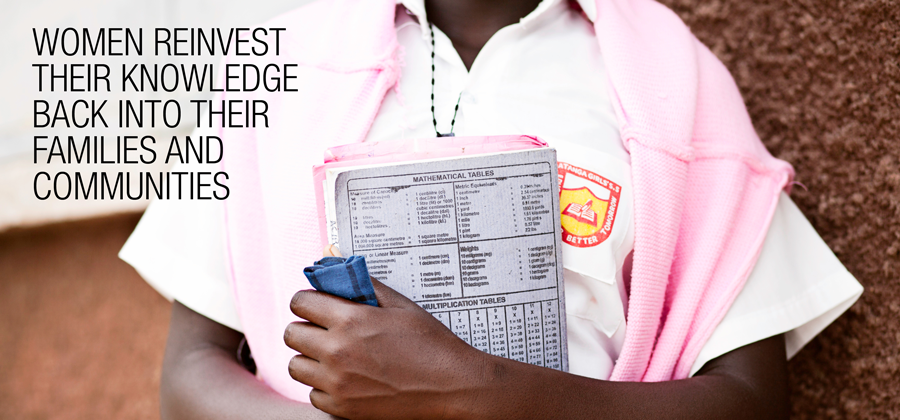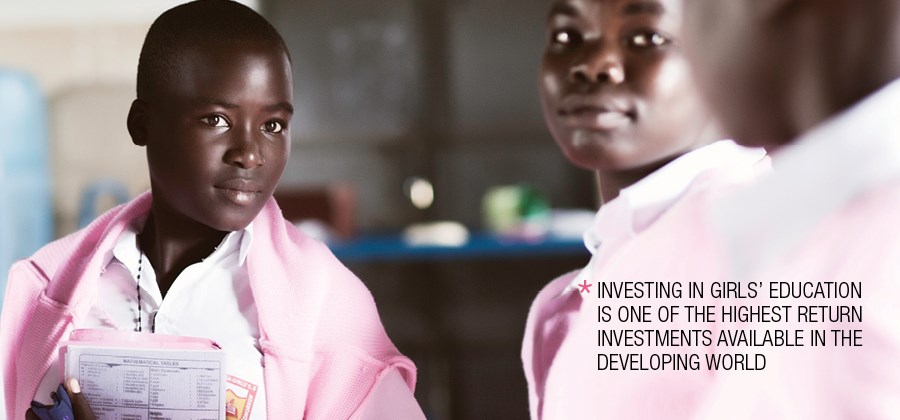Why Girls
Educated girls make choices that contribute to the overall health and economic stability of their communities, villages and ultimately their country.
By Educating Girls We Will:
Create Opportunity
- 50% of the population in underdeveloped countries are women; they are largely not employed in meaningful or paid work.
- In developing countries, educating all their people, not just half of them, vastly improves economic growth.
- Educating women to earn an income doubles the workforce, creates better gender equality and increases overall wealth.
Reduce Poverty
- Women bear almost all responsibility for meeting basic family needs, yet they are systematically denied the resources, information and freedom to fulfill this responsibility.
- Once educated, a woman can provide for her family and will invest 90 percent of her earnings into supporting her family, as compared to only 30 to 40 percent for a man.
- One extra year of primary school boosts girls’ eventual wages by 10 to 20 percent. An extra year of secondary school boosts them by 15 to 25 percent.
Improve Health
- More than a quarter of girls in developing countries become mothers before age 18.
- Medical complications from pregnancy are the leading cause of death among girls ages 15 to 19 worldwide.
- When a girl in the developing world receives 7 or more years of education, she marries 4 years later and has 2.2 fewer children.
- Smaller families with more mature mothers lead to healthier babies, healthier pregnancies and a lower risk of HIV and death.

